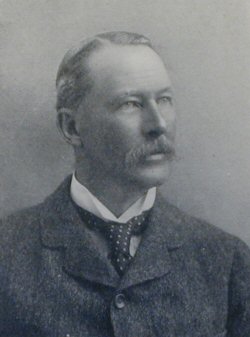 THE
DUKE OF MONTROSE
THE
DUKE OF MONTROSEFOR many generations the Dukes of Montrose have been intimately associated with the City of Glasgow. In the days of Charles I. the Great Marquis had his chief seat at Mugdock Castle, a few miles to the north, and the town house of the family, known as the Duke's Lodging in Drygate, was long one of the most notable buildings in the city. Among their other offices, Dukes of Montrose were Chancellors of Glasgow University in 1715, 1743, 1781, and 1837, and in the great events, benevolent enterprises, and royal pageants of the city, they have always taken a foremost place. The relationship has become permanent in a very real way through the circumstance that Glasgow's water supply is derived from Loch Katrine on the Montrose estate. The house has also always filled a brilliant and heroic place in the history of the country. The late Duke held the high offices of Postmaster-General and Lord Steward of the Household, and in the achievements of bygone centuries it is enough to mention the names of the brave and brilliant Marquis who was Lieutenant-General for King Charles I., and of Sir John the Graham the heroic comrade of SirWilliam Wallace in the Scottish Wars of Independence.
His Grace of Montrose has long been popular in several arenas. An enthusiast for "the sport of kings" he still keeps a few racehorses in the stables at Buchanan Castle, and occasionally shows their metal by winning an "event." His horse, Dazzle, won the Ayr Gold Cup for years, three of these in succession. Another of the Duke's horses, Hop-Bloom, won the Manchester Cup in 1897, the first year it was run for. And his Grace's most famous steed, Strathblane, won over thirty races, fourteen of them in Scotland, including the Ayr Gold Cup and the other chief events at Ayr, Paisley, Perth, and Lanark. At one time or other his Grace has carried off most of the historical racing trophies of Scotland, including the Paisley Silver Bells and the Lanark Silver Bells.
The Duke has been a great traveller and a mighty hunter, seeking his sport in many remote places of the earth, and among his trophies at Buchanan are a huge alligator skin and a praying wheel from India, a war drum from Burma, the heads of buffalo and other big game from Central Africa, and a most interesting collection of weapons of all kinds from these regions, the Andaman Islands, and elsewhere.
In 1872 the Duke joined the Coldstream Guards, and two years later was transferred to the 5th Lancers; but he retired from the army in 1878. For many years his Grace was commanding officer of the Glasgow Yeomanry, and in that position he greatly popularised the regiment. When the recent Boer War broke out he was commander of the 3rd Battalion Argyll and Sutherland Highlanders, and he went with his regiment to Ireland on garrison duty. Twelve months later the battalion volunteered for active service in South Africa, and the Duke took his men out to the Cape in January, 1902. At the seat of war he commanded the column which constructed the block-houses in the North-west of Cape Colony, from Victoria West to Calvinia, a distance of 370 miles. Two block-houses, on the average, were built to the mile, and the column consisted of 19 officers and 485 men, with 289 natives, 326 horses, 312 mules, and 286 donkeys. It was this device of block-house construction which brought the war to an end.
The Duke was born at old Buchanan House 7th November, 1852, and succeeded his father as 5th Duke 30th December, 1874. He married in 1876 Violet-Hermione. second daughter of Sir Frederick Graham, Bart., of Netherby, and has three sons and two daughters. Among his other dignities he is Lord Lieutenant of Stirlingshire, Hereditary Sheriff of Dunbartonshire, and General of the Royal Archers of Scotland. In 1890 he became Lord Clerk Register of Scotland, and he is an Aide-de-Camp to His Majesty, King Edward. At home he finds his recreation in shooting, angling, and forestry, for all of which the ducal demesne affords the amplest scope.